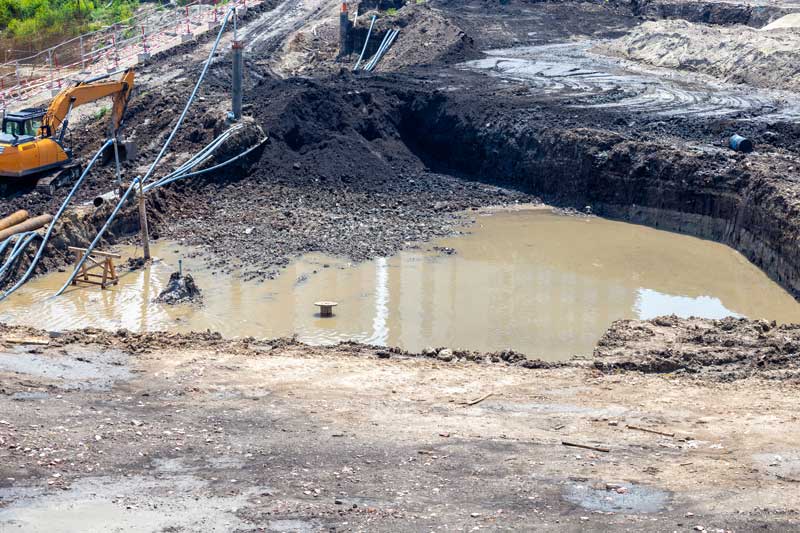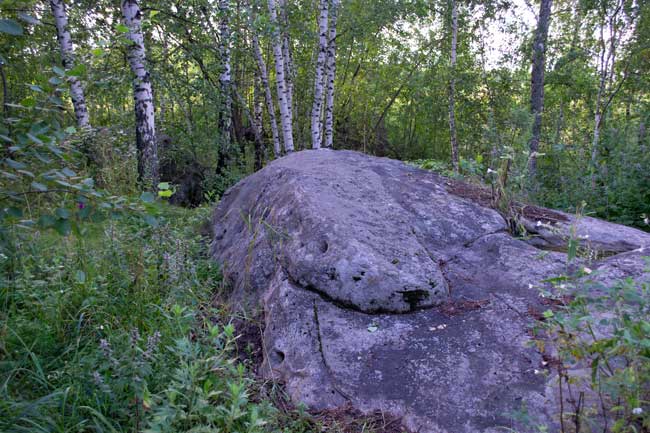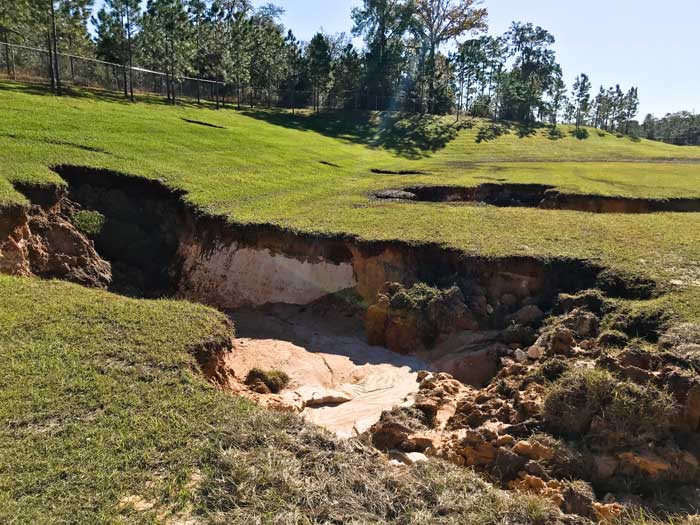While licensed pool contractors take every precaution available, sometimes unforeseen circumstances may occur before or during the construction of an inground pool that could lengthen or add cost to the project. Some of these can be investigated yourself prior to construction so that you can factor the cost into your project. These are usually rare, but they have occurred.
Low Ground Areas
If the land around your property is higher than where the pool dig site is selected, some clever excavation work may be required to ensure that water goes around, and not into or underneath your completed swimming pool. Either retaining walls with drains are selected, or a trench is built around the pool deck and filled with stone. This is easily determined by getting a detailed topographical map of your property or watch the video below, which walks you through how to grade your backyard properly.
High Water Tables
This is a common issue in the state of Florida. Florida sits on a 100,000 square mile aquifer system than provides plenty of naturally filtered drinking water and beautiful springs. Unfortunately because of this, Florida has a very high water table, especially closer to the coast. So what does that mean for the average pool build? As we dig about 4-6 feet down you start to hit water. Sometimes the water seems to flow out as fast as it flows in, which can present a problem.

The typical solutions for this problem are the following. It’s possible to truck in enough dirt to raise the pool area by a few feet to avoid the problem entirely, though this is an expensive solution. If the seepage is not particularly bad a pump system can be installed during construction to remove as much water as possible and ensure a dry work site. If it’s a mild case then trenches can be built at the bottom of the dig site to funnel away the incoming water while work is completed.
This is something that you can easily test yourself before the contractor comes out. Simply break out an auger or a shovel and dig about 4-6 feet down. If you get a large pool of water in the hole, you may be sitting on a high water table.
Large Rocks
Large rocks that have to be removed are sometimes a problem. Luckily in Florida this is a rarity. Depending on the size of the rock, special machinery may have to be called in to either haul it out or to break it into pieces for removal. The length of this process can vary depending on the size of the rock and where it is. If it only slightly protrudes into the dig site, it can be shaved and left in place.

Sinkholes
Sinkholes occur more frequently in Florida than any other state in the USA. Because of the State’s vast aquifer system, there are often pockets of empty space during droughts that can collapse in on themselves. These mostly occur in Central and Northern Florida but can occur in most parts of the state. When digging deep down into the ground, sinkholes are not commonly uncovered but can be something to consider.
Testing for sinkholes on a construction site is not required by building codes. Unfortunately, testing for sinkholes is often costly and inconclusive and is therefore usually ruled out as well. During an excavation in sinkhole-heavy areas, special attention is paid to signs that a hole is forming.

Protected Trees and Wildlife
If you have to remove or alter a tree in order to build the pool, you must be very cautious. Before removing a tree from your property, or any property for that matter, take a trip to the local city hall or a licensed professional landscaper. Every county has different definitions of what constitutes a protected tree. Some definitions are obvious while others require an ecological specialist to understand, so to avoid possible fines, involve a professional if you are uncertain. Some counties in Florida have over 71 protected tree species that cannot be removed unless they pose a danger to the home should they collapse.
Additionally, if any endangered or threatened wildlife has turned your backyard into their home, you will not be able to break ground until they move out. Knowing destruction of their habitat can result in criminal penalties.

Comments